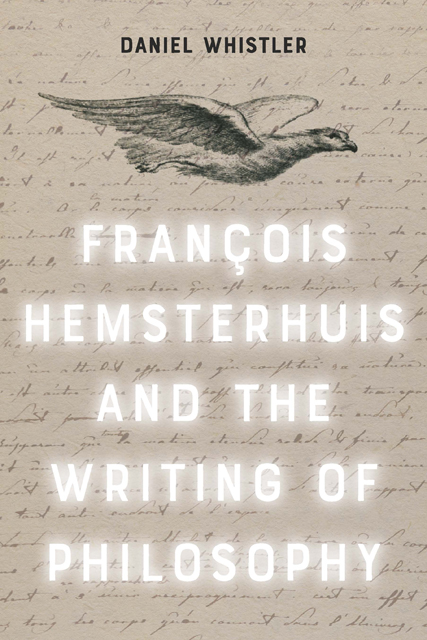Chapter Two - Analysis and Poetry
Published online by Cambridge University Press: 03 June 2023
Summary
Hemsterhuis is very often a logical Homeric Hymn.
Novalis (1960–2006: 2.462)
§6 ‘Poet-Philosophers’ and ‘Humble’ Analysts
This chapter treats a second set of Hemsterhuisian demands that overlap significantly with those identified in the previous chapter, even if they ultimately remain distinct from them. In the previous chapter, my concern was Hemsterhuis’ insistence on both Socrates and Newton, and, in this chapter, I am interested in a stylistic variant: both sober analysis and imaginative myth – both the analytic and the aesthetic. This is, in part, a repetition of the ancient–modern double bind of the previous chapter (insofar as analysis is aligned with the geometrical and myth with something non-Newtonian), but something also shifts in this repetition, for analysis and myth no longer strictly correspond to the two perihelia of the ancient and the modern. There are both ancient and modern writers of speculative myths (e.g., both Lucretius and Descartes), just as there are both ancient and modern analysts (e.g., both Socrates and Newton). When it comes to the communication of philosophy, Newton and Socrates no longer represent conflicting demands, but both stand on the side of analysis. It is now a matter of Socrato-Newtonian analysis, on the one hand, and something more, on the other – a stylistic supplement of dialogue, myth, metaphor and imagery.
To begin, it is worth returning to the problematic established at the end of §1 – that of a ‘poetic turn’ in Hemsterhuis’ communication of philosophy. While as late as 1776 Hemsterhuis (in the guise of one of his characters) can still insist on ‘no poetry or fables in philosophy’ (EE 2.46; OP 338), things look very different a couple of years later: the last dialogues are filled with imagery, allegory, myth, jokes and ironic play. To get some sense of this shift, therefore, it is worth beginning with Hemsterhuis’ earlier position on philosophical style from the mid-1770s – and, happily, the topic is broached in detail at the beginning of his correspondence with Gallitzin in 1775. In the first months of their friendship, Hemsterhuis provides one of his fullest statements on the writing of philosophy provoked by his and Gallitzin’s shared experience reading an unnamed book by Charles Bonnet.
- Type
- Chapter
- Information
- Francois Hemsterhuis and the Writing of Philosophy , pp. 59 - 98Publisher: Edinburgh University PressPrint publication year: 2022



